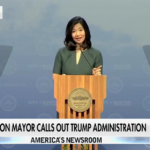A new policy clarifying how homeowners may list their properties for sale may instead sow confusion and friction in the housing market just months after an earlier set of rule changes went into effect, adding an additional layer of complexity for buyers and sellers.
The new policy, called “Multiple Listing Options for Sellers,” was issued in late March by the National Association of Realtors (NAR), the Chicago-based lobbying group with roughly 1.5 million real estate agent members.
It allows owners to offer their homes for sale in more limited, private ways than simply listing on the broad marketplaces known as multiple listing services. NAR says it was developed in response to seller demand for such an approach. But many industry professionals say very few sellers actually ask for such an option but are instead steered to it by brokers, who stand to benefit from keeping listings semi-private and shared among their own client networks.
What’s more, an increasingly fragmented and inefficient market benefits neither buyers nor sellers, many observers believe – and may increase the likelihood of discriminatory practices.
“If private listings increase, the market will become more chaotic, inefficient and subject to manipulation,” said Steve Brobeck, a senior fellow with the Washington-based Consumer Policy Center, who’s tracked the consumer experience with brokers and listings for decades.
What is the new NAR listing policy?
The March policy offers two new choices. An “Office Exclusive Exempt Listing” is one that will only be available to other agents at the listing agent’s brokerage. As soon as an office exclusive listing is publicly marketed in any way (for example a “FOR SALE” sign, a social media post, ad in the paper, etc.) the listing must be shared with the MLS within one business day.
A “Delayed Marketing Exempt Listing” will be shared on the multiple listing service – and therefore able to be seen by other real estate professionals – but not automatically advertised more broadly than that, on consumer-facing websites such as Homes.com or Zillow.com, for a period of time chosen by the local guidelines.
Any listing that’s held back from the broadest possible exposure or shared internally is also sometimes called a “pocket listing.” The March policy built on an earlier one NAR issued, known as “Clear Cooperation,” which mandated that a property be listed on the multiple listing service within one day of being marketed to the public.
“There are so many implications of a less-than transparent marketplace,” said Summer Goralik, an independent real estate compliance consultant. “Everyone’s talking about seller’s choice. But buyer’s choice just got really limited.”
Advocates say the new policy encourages what’s often called “dual agency” – when one agent, or multiple agents working for the same brokerage, represent both sides of the transaction. However, NAR argues that office exclusives are available outside of the brokerage as soon as the listing is marketed publicly in any way. Delayed market exempt listings are always available to all multiple listing service participants and subscribers regardless of the brokerage they are affiliated with − although critics say that means a prospective buyer must be working with a real estate agent in order to even see that a home is for sale.










